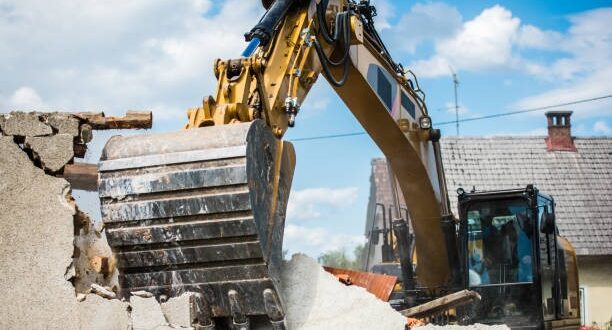Home demolition is the process of tearing down a house in part or its entirety. The main reasons for demolishing a house include making way for new construction, getting rid of substandard housing, or clearing land for other purposes.
No matter the reason, demolishing a house is a big job only experienced professionals should undertake. As much as people fear demolition works, it is a fairly straightforward process for professionals.
Believe it or not, it is possible to complete the whole demolition process of a building in a few days. However, choosing the right service provider is crucial in this. But before that, let’s first understand what all include in a home demolition job.
The Demolition Process
1. The Initial Home Inspection
The first stage in demolishing your home is to have it inspected, after which you must obtain the required council permits. Your demolition specialist uses his understanding of the building and the extent of the work to give you a quote.
2. Necessary Permits to Obtain
Before beginning the demolition process, there are specific permits to obtain. Without these, you cannot start the demolition.
A Development Application or Complying Development Certificate permission for demolition is necessary to move forward with your on-site demolition. A DA is commonly given through your local council, and standards can change accordingly. And your demolition company can typically apply for a CDC.
The CDC procedure takes roughly 21 days, including a seven-day waiting period. Within this time, you must distribute letters to neighbouring properties informing them of the planned demolition. These notices must be delivered at least one week before the start of demolition.
3. Evacuation
Before a home demolition can begin, the premises should be clear of all occupants, and personal belongings.
4. Disconnection of Services to the Property
Once the area is cleared, the next step is disconnecting any utilities that are still connected to the house. It includes water, gas, electricity, and sewage.
You should get in touch with your gas provider at least six weeks before you start the deconstruction process. Disconnecting the water, electricity, and NBN (National Broadband Network) is also recommended.
Before beginning deconstruction, air conditioning equipment need to be degassed as well. You can ask your demolition service provider for help with fencing, electricity shutoff, and everything necessary.
5. Manual Demolition
Once all utilities are disconnected, the process starts with the assessment of the house’s exterior to determine the best way to proceed with the demolition.
Now the whole process begins with manual demolition. Typically, this includes removing dangerous items like asbestos by hand, if present. Any good asbestos removal contractor will handle the job with efficiency. They will help the process with several asbestos solutions.
Materials that are recyclable and reusable can also be preserved during this procedure.
6. Use of Machinery
Mechanical demolition can start once toxic wastes (like asbestos) have been taken out of the way. This method of home deconstruction is typically the most successful and economical. Mechanical demolition is the most prevalent type of demolition. And it involves removing the house using excavators and other large machines.
After the house’s exterior has been taken care of, its interior will be tackled. All walls, floors, ceilings, fixtures, and fittings will be removed until only the bare skeleton of the house remains.
Once the house’s interior is completely gutted, the final step is to bring down any remaining external walls and collapse the roof.
7. Final Cleanup
After demolition is complete, the site will be filled with a lot of debris, which is then delivered to a suitable waste management outlet. It is an essential step in the demolition process.
The disposal standards for various materials may often make this procedure complex for homeowners, so it helps to have your demolition company help with this stage.
8. Demolition Clearance Certificate
You will eventually qualify for a Demolition Clearance Certification once all the above steps have been completed. This certificate demonstrates that your property is risk-free, sanitary, and asbestos-free. It is a mandatory requirement before development can start.
Even if a building is devoid of asbestos, it can often be found in the soil on a site, necessitating skill to finish the demolition and satisfy all regulations.
After this, finally, you can start building!
Conclusion
Demolition can be completed in a matter of days. However, the preparation for it is complex. That is why it is important to have a reliable professional to undertake the job for you. Merhi Group is one of the best demolition companies, which can handle everything from asbestos removal in Melbourne to complete home demolition.
As you can see, the process includes many critical steps—clearing out all personal belongings and disconnecting utilities, gutting the interior of the house, and collapsing the remaining external walls and roofs. A good demolition service provider will not only tackles all these steps but also makes the whole process easier for you!
 HammBurg Be informed with latest news, reviews, entertainment, lifestyle tips, and much more.
HammBurg Be informed with latest news, reviews, entertainment, lifestyle tips, and much more.




